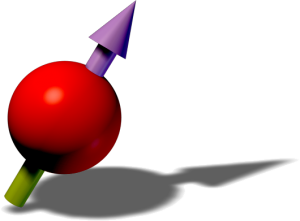by Sandra Brandstetter
Abstract:
In this thesis, I describe and characterize a setup for the production of vortices in a Bose-Einstein Condensate with dipolar interactions. The formation of vortices as a response to rotation is one of the key features of a superfluid, which has been observed in contact interacting Bose-Einstein condensates and Fermi gases. The long-range, anisotropic dipole-dipole interaction present in Bose-Einstein condensates of dipolar atoms is expected to alter the properties of the vortices as well as the interaction between them. Although many theoretical predictions on vortices in dipolar quantum gases exist, they have not yet been observed experimentally. The aim of this thesis is to built and design a setup for the creation of vortices in a dipolar condensate of Erbium and/ or Dysprosium atoms. The first part of the setup consists of a one-dimensional lattice with variable spacing and confinement, a so-called accordion lattice. It is formed by the interference of two laser beams in the focal point of an aspherical lens. The confinement in this lattice can be altered by changing the angle of interference, allowing us to trap the atoms in a configuration with weak confinement and high lattice spacing. As the initial lattice spacing is larger than the spatial extent of the condensate, we can trap all atoms within a single node of the lattice. By increasing the separation of the beams, the vertical confinement can be increased, while the confinement in the horizontal plane remains weak, leading to the desired trap geometry for the creation of vortices. To find the appropriate parameters, we programmed a numerical simulation of the accordion lattice. Based on the results of these computations, the experimental setup for the accordion lattice was planned and set up. We characterize the stability as well as the compression of the accordion lattice. The second part of the experimental setup consists of a blue detuned variable trap, which is achieved by modulating the intensity distribution of a laser beam with a wavelength of lambda = 370nm using a Digital micromirror device (DMD). This wavelength is blue detuned for both Erbium and Dysprosium. We design an optical setup to image the pattern displayed on the DMD onto the atomic plane.
Reference:
Towards the Creation of Vortices in a Dipolar Bose-Einstein Condensate,
Sandra Brandstetter,
Master’s Thesis, 2020.
Sandra Brandstetter,
Master’s Thesis, 2020.
Bibtex Entry:
@article{BrandstetterMSc,
title = {Towards the Creation of Vortices in a Dipolar Bose-Einstein Condensate},
author = {Brandstetter, Sandra},
journal = {Master's Thesis},
year = {2020},
month = {Jan},
abstract = {In this thesis, I describe and characterize a setup for the production of vortices in
a Bose-Einstein Condensate with dipolar interactions. The formation of vortices
as a response to rotation is one of the key features of a superfluid, which has been
observed in contact interacting Bose-Einstein condensates and Fermi gases. The
long-range, anisotropic dipole-dipole interaction present in Bose-Einstein condensates
of dipolar atoms is expected to alter the properties of the vortices as well as the
interaction between them. Although many theoretical predictions on vortices in
dipolar quantum gases exist, they have not yet been observed experimentally. The
aim of this thesis is to built and design a setup for the creation of vortices in a dipolar
condensate of Erbium and/ or Dysprosium atoms.
The first part of the setup consists of a one-dimensional lattice with variable spacing
and confinement, a so-called accordion lattice. It is formed by the interference of two
laser beams in the focal point of an aspherical lens. The confinement in this lattice
can be altered by changing the angle of interference, allowing us to trap the atoms
in a configuration with weak confinement and high lattice spacing. As the initial
lattice spacing is larger than the spatial extent of the condensate, we can trap all
atoms within a single node of the lattice. By increasing the separation of the beams,
the vertical confinement can be increased, while the confinement in the horizontal
plane remains weak, leading to the desired trap geometry for the creation of vortices.
To find the appropriate parameters, we programmed a numerical simulation of the
accordion lattice. Based on the results of these computations, the experimental setup
for the accordion lattice was planned and set up. We characterize the stability as
well as the compression of the accordion lattice.
The second part of the experimental setup consists of a blue detuned variable
trap, which is achieved by modulating the intensity distribution of a laser beam
with a wavelength of lambda = 370nm using a Digital micromirror device (DMD). This
wavelength is blue detuned for both Erbium and Dysprosium. We design an optical
setup to image the pattern displayed on the DMD onto the atomic plane.},
url = {http://www.erbium.at/FF/wp-content/uploads/2020/04/Master_Sandra_Brandstetter.pdf},
}
